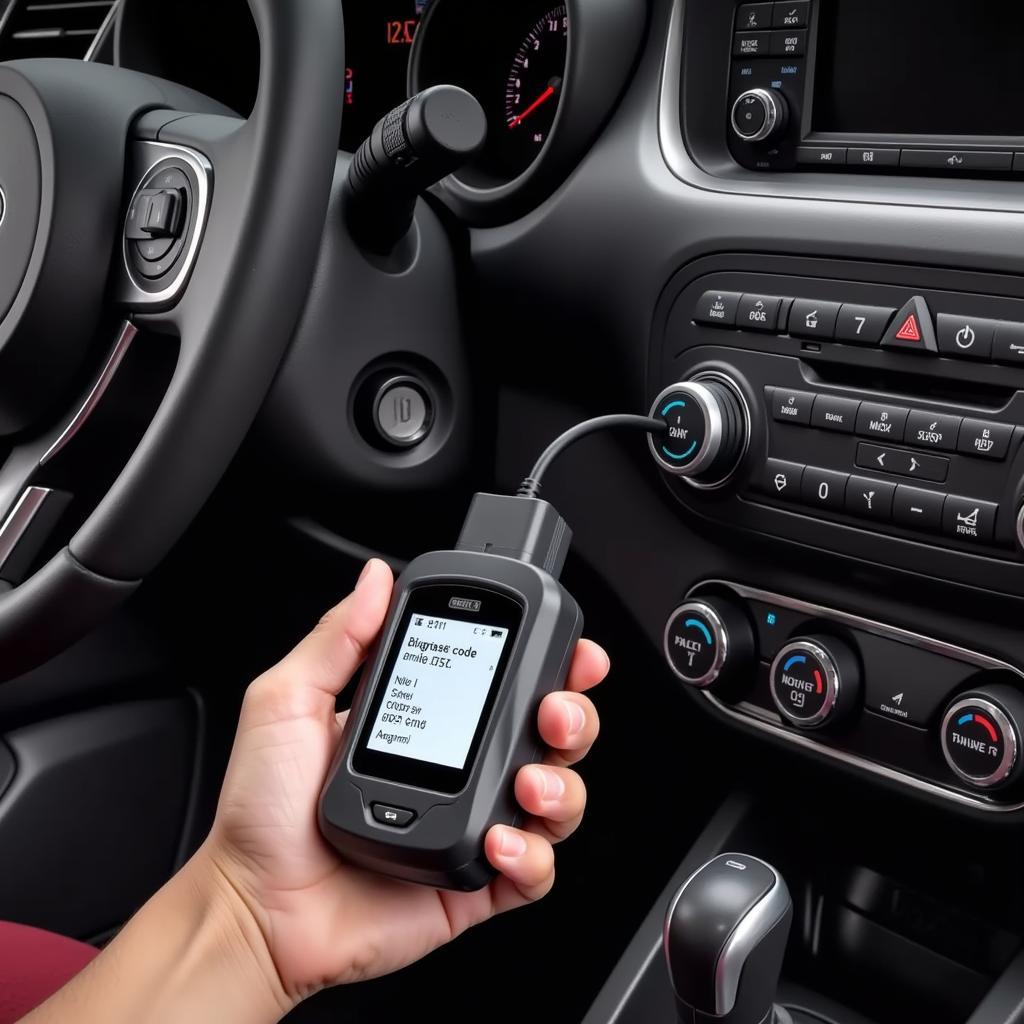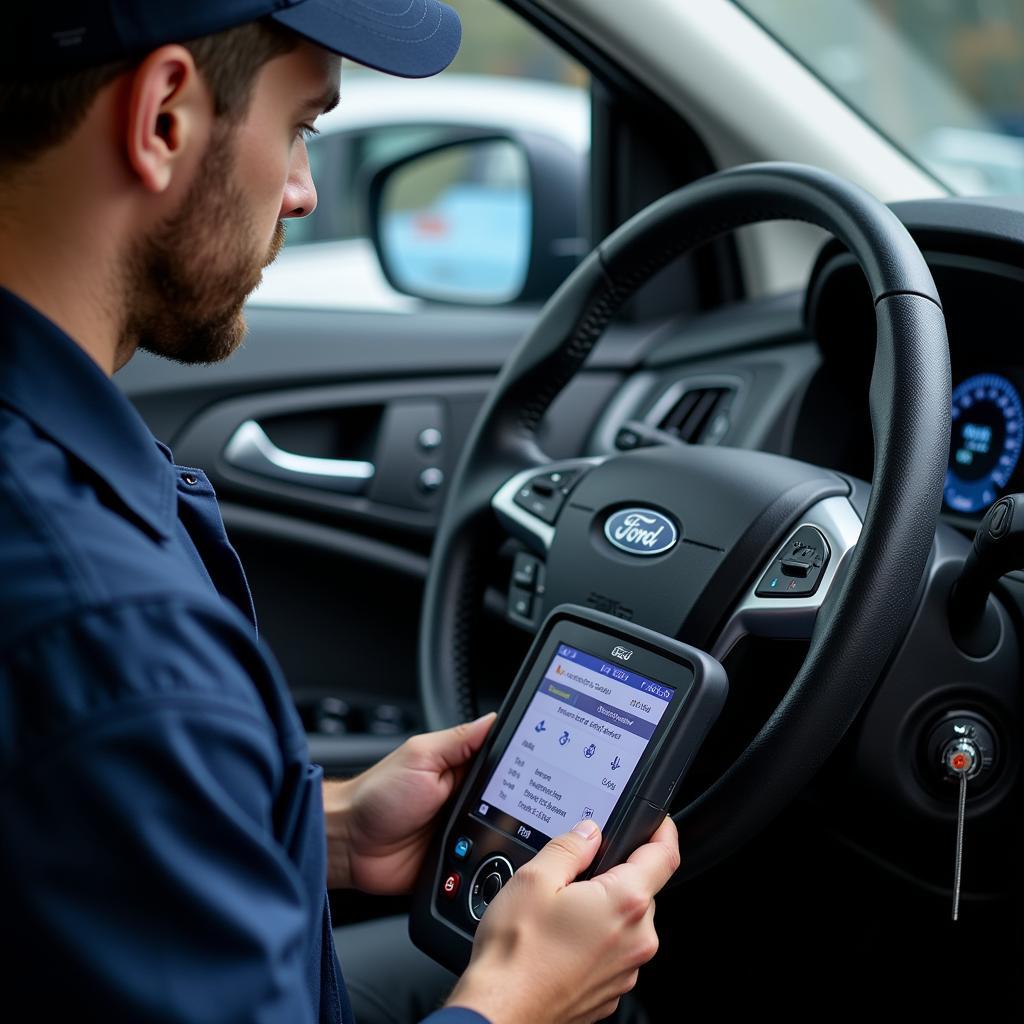Operating engine modules with a scan tool is an essential skill for any automotive professional. It allows you to diagnose and troubleshoot problems in a vehicle’s engine control system, access and modify parameters, and perform various other functions. This guide will walk you through the process of operating engine modules with a scan tool, covering everything from basic principles to advanced techniques.
Understanding Engine Modules and Scan Tools
Before diving into the practical aspects of using a scan tool, it’s crucial to understand what engine modules are and how scan tools interact with them.
What Are Engine Modules?
Engine modules, also known as electronic control units (ECUs), are small computers responsible for managing various functions within the engine. Some common engine modules include:
- Engine Control Module (ECM): The brain of the engine, controlling fuel injection, ignition timing, and other critical aspects of engine operation.
- Transmission Control Module (TCM): Responsible for gear selection, shift points, and other transmission functions.
- Anti-lock Brake System (ABS) Module: Manages the ABS system, providing braking stability and control.
- Airbag Control Module: Controls the deployment of airbags in the event of a crash.
What Are Scan Tools?
Scan tools are diagnostic devices that communicate with engine modules to read and interpret data. They provide a user-friendly interface to access various diagnostic information, perform tests, and even reprogram modules.
How Scan Tools Operate Engine Modules
Scan tools use a specific communication protocol to interact with engine modules. This protocol is typically based on industry standards like OBD-II (On-Board Diagnostics) for modern vehicles.
The Process of Communicating with an Engine Module
- Connection: The scan tool connects to the vehicle’s diagnostic connector, usually located under the dashboard.
- Communication: The scan tool sends a request to the engine module using a specific communication protocol.
- Response: The engine module responds to the scan tool’s request with data, codes, or instructions.
- Interpretation: The scan tool interprets the response and displays it on its screen in a user-friendly format.
Basic Operations with a Scan Tool
Once connected to a vehicle, you can perform a wide range of operations with a scan tool. Some of the most common operations include:
- Reading Diagnostic Trouble Codes (DTCs): DTCs are error codes stored by engine modules when they detect a problem. Reading these codes can help identify the source of a malfunction.
- Data Stream Viewing: This feature allows you to view live data from various sensors and actuators in real-time, providing valuable insights into the engine’s health and performance.
- Actuator Tests: You can use a scan tool to activate and test actuators, such as solenoids and relays, to confirm their functionality.
- Module Resetting: Clearing stored DTCs and resetting adaptive values in engine modules can be beneficial in certain troubleshooting scenarios.
Advanced Operations with a Scan Tool
Beyond basic operations, scan tools offer more advanced features for experienced technicians.
Reprogramming Engine Modules
Some scan tools can reprogram engine modules with updated software or calibration data. This is essential for:
- Software Updates: Updating engine module software can address bugs, improve performance, or fix known issues.
- Calibration Changes: Modifying calibration data allows you to customize engine parameters, such as fuel economy or throttle response.
Performing Adaptations
Engine modules use adaptive learning to adjust to changes in driving conditions and vehicle components. Some scan tools can help you perform adaptations, ensuring optimal performance and fuel efficiency.
Special Function Tests
Advanced scan tools often include specialized function tests, specific to certain vehicle models or engine types. These tests can help diagnose problems that might not be evident from standard data stream viewing or DTC readings.
Tips for Operating Engine Modules with a Scan Tool
- Use a reputable scan tool: A high-quality scan tool is essential for accurate and reliable diagnostics.
- Consult the scan tool manual: Each scan tool has its unique features and operating procedures.
- Understand the communication protocol: Ensure your scan tool is compatible with the vehicle’s communication protocol.
- Use caution when reprogramming modules: Always back up existing data before making any changes to engine module programming.
- Keep your scan tool updated: Software updates for scan tools are essential for compatibility with the latest vehicle models and diagnostic capabilities.
“I recommend always consulting the vehicle’s service manual for specific instructions related to operating engine modules,” says John Smith, a veteran automotive technician. “It’s crucial to follow the manufacturer’s guidelines to avoid damage or potential safety risks.”
Conclusion
Operating engine modules with a scan tool is a powerful diagnostic tool for automotive professionals. With the right understanding of engine modules, communication protocols, and scan tool operations, you can effectively diagnose and troubleshoot engine problems, access and modify parameters, and perform various other tasks. By following these guidelines, you can confidently utilize a scan tool to improve vehicle performance and ensure optimal operation.
FAQ
Q: What are the most common types of scan tools?
A: The most common types include OBD-II scan tools, specialized OEM scan tools, and universal scan tools. Each has its own advantages and limitations depending on your needs.
Q: Can I use a smartphone app as a scan tool?
A: While some smartphone apps offer basic diagnostic capabilities, they often lack the features and accuracy of professional scan tools.
Q: How do I choose the right scan tool for my needs?
A: Consider the types of vehicles you work on, the features you need, and your budget when choosing a scan tool.
Q: Can I reprogram engine modules myself?
A: Reprogramming engine modules requires specialized knowledge and tools. It’s generally best left to qualified technicians.
Q: What should I do if I encounter an error message while using a scan tool?
A: Consult your scan tool manual, refer to online resources, or contact the manufacturer for troubleshooting assistance.
Need help operating engine modules with a scan tool?
Our team of experts at DiagXcar is here to assist you.
Contact us anytime for personalized support and guidance.


